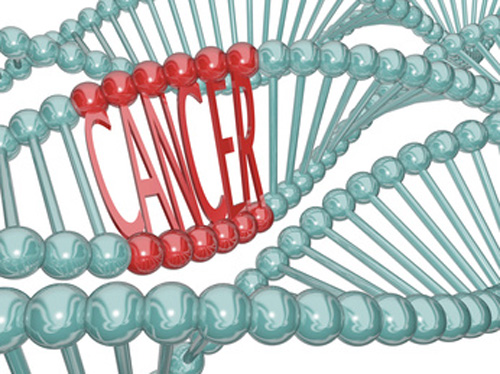Highlights
•Multiplexed quantification of the effect of thousands of distinct p53 mutations
•Differential mutation outcomes reflect functional evolutionary constraints
•Neutral SNPs may interact with acquired mutations to modulate phenotypic outcome
•Hotspot p53 mutations confer a relative competitive advantage in vivo
Summary
The TP53 gene is frequently mutated in human cancer. Research has focused predominantly on six major “hotspot” codons, which account for only ∼30% of cancer-associated p53 mutations. To comprehensively characterize the consequences of the p53 mutation spectrum, we created a synthetically designed library and measured the functional impact of ∼10,000 DNA-binding domain (DBD) p53 variants in human cells in culture and in vivo. Our results highlight the differential outcome of distinct p53 mutations in human patients and elucidate the selective pressure driving p53 conservation throughout evolution. Furthermore, while loss of anti-proliferative functionality largely correlates with the occurrence of cancer-associated p53 mutations, we observe that selective gain-of-function may further favor particular mutants in vivo. Finally, when combined with additional acquired p53 mutations, seemingly neutral TP53 SNPs may modulate phenotypic outcome and, presumably, tumor progression.
Introduction
The TP53 tumor suppressor gene, which encodes the p53 transcription factor, is the most frequently mutated gene in human cancer (Kandoth et al., 2013, Olivier and Taniere, 2011). In response to a variety of cellular stress conditions, p53 is activated to suppress transformation by inducing cell cycle arrest, DNA damage repair, senescence, or apoptosis (Bieging et al., 2014, Levine and Oren, 2009). In concordance with its pivotal role in suppressing tumorigenesis, mutations disrupting wild-type p53 (wtp53) function are extremely common in human cancers (Brosh and Rotter, 2009), with variable prevalence between tumor types (Blons and Laurent-Puig, 2003, Iacopetta, 2003, Peller and Rotter, 2003, Schuijer and Berns, 2003). Unlike other tumor suppressors, the majority of cancer-associated mutations in p53 are missense mutations residing in its DNA-binding domain (DBD) (Bouaoun et al., 2016, Olivier et al., 2010) and leading to loss of tumor suppressive activity and possible gain of novel oncogenic functions (reviewed in Oren and Rotter, 2010). In its wild-type (WT) form, p53 binds as a homo-tetramer to DNA response elements of its target genes and orchestrates gene expression patterns to cope with cellular stress. In contrast, the effects of mutant p53 (mutp53) on target gene expression are more complex (Weisz et al., 2007) and are thought to interfere with pivotal signaling pathways (Riley et al., 2008). Previous studies in yeast have shown that different mutp53 variants exhibit altered transactivation capacity towards wtp53 target genes in a mutant- and target-dependent manner (Kato et al., 2003, Resnick and Inga, 2003). This comprises a general reduction in transactivation capacity or an altered spectrum of regulated genes, including non-wtp53 target genes (Menendez et al., 2006, Resnick and Inga, 2003). Interestingly, the residual transcriptional activity of a particular mutant is not directly indicative of the extent of its tumor suppressive functionality or of its ability to induce apoptosis (Kakudo et al., 2005). Moreover, some p53 mutants (“super-trans mutants”) exhibit increased transactivation potential towards particular targets when compared to wtp53 (Resnick and Inga, 2003). Thus, in order to determine the tumor-suppressive capacity of specific p53 mutations, the phenotypic impact of each mutation should be experimentally quantified. Such knowledge is of particular importance for the personalized treatment of cancer.
However, while the availability of patients’ genomic sequences constantly increases, our understanding of mutation-specific biological effects remains a limiting factor. Specifically, detailed studies assessing the effects of p53 mutations in human cells have been largely limited to the most prevalent “hotspot” mutations, which account for ∼30% of cancer-associated mutations; this leaves the remaining ∼70% mostly uncharacterized. Deep mutational scanning (Fowler and Fields, 2014) offers a high-throughput approach for revealing the consequences of genetic variation both in regulatory and coding sequences (Brenan et al., 2016, Keren et al., 2016, Majithia et al., 2016, Tewhey et al., 2016, Ulirsch et al., 2016, Weingarten-Gabbay et al., 2016). Yet, although the construction of a large-scale mutp53 library has recently been reported (Kitzman et al., 2015), phenotypic characterization of such p53 mutants has not been performed.
To address this important knowledge gap, we devised a massively parallel mutational scan and measured the functional impact of thousands of distinct p53 DBD variants in vitro and in vivo. This provides the first comprehensive phenotypic catalogue of p53 mutations in human cells, quantifying the relative fitness effect of each mutation in culture and its selective advantage in vivo—presumably representing context-dependent gain-of-function. Our findings demonstrate tight sequence-fitness relationships underpinning evolutionary selection and recapitulate the prevalence and clinical impact of particular mutations in human tumors…







